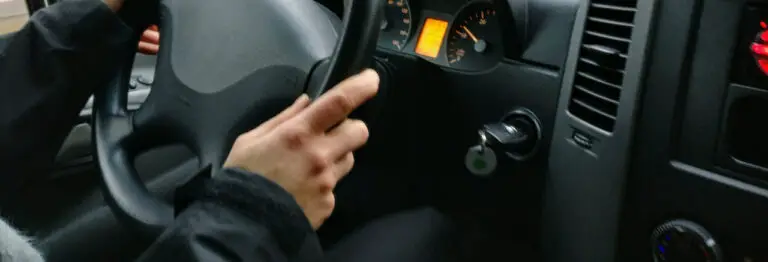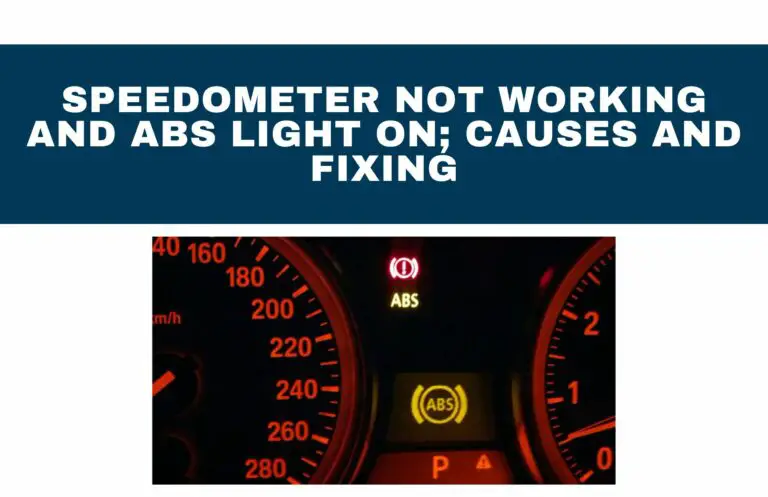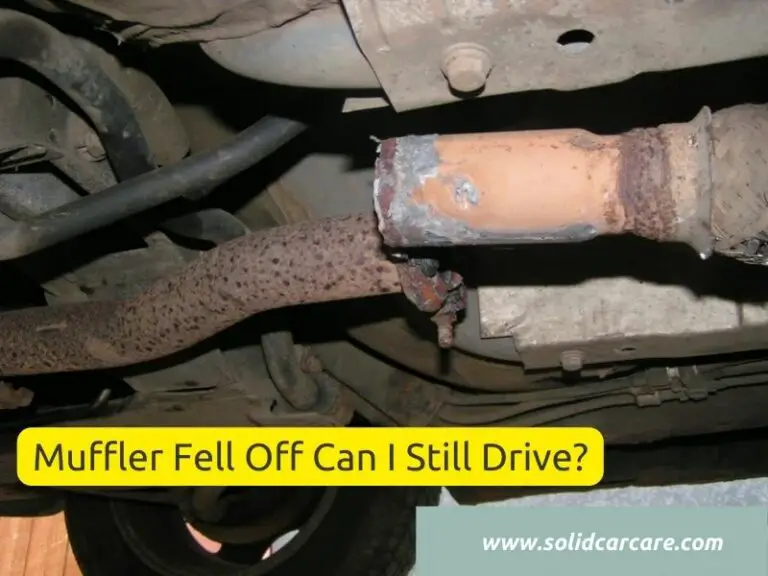Speedometer Not Working, But RPM Works; Causes, Diagnosing and Fixing
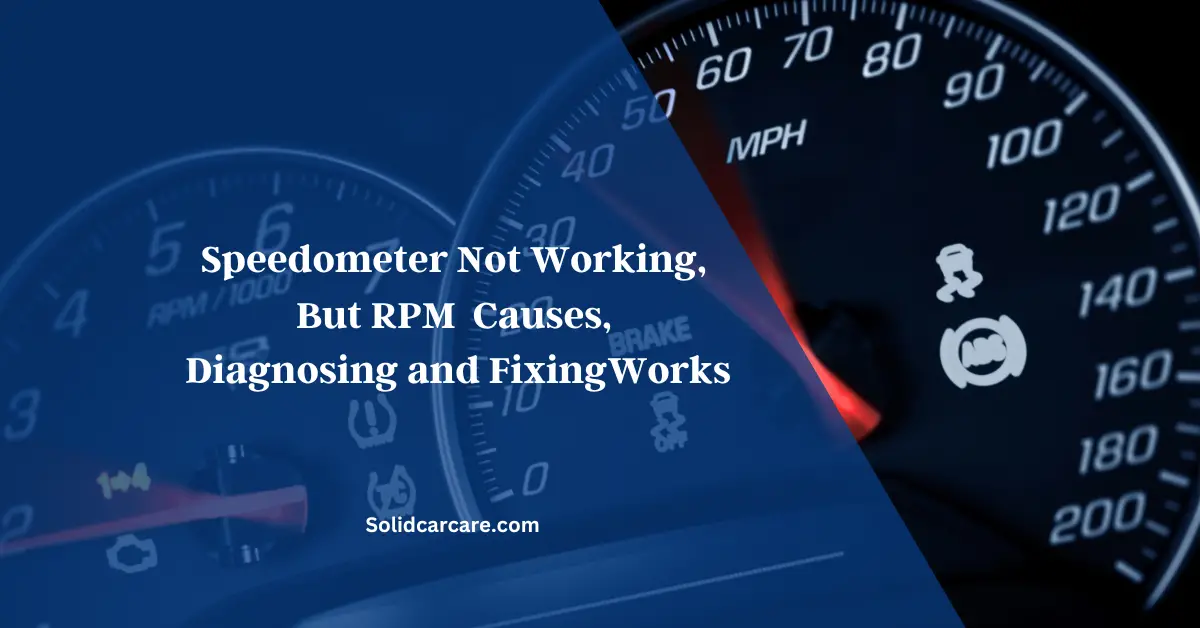
Are you experiencing a situation where your vehicle’s speedometer has stopped working while your RPM gauge is functioning as usual? In this article, we will explore the common causes behind this issue and guide you through the process of diagnosing and fixing it. From faulty speed sensors to potential instrument cluster malfunctions, we’ll cover all the possible culprits to help you get back on the road safely.
Table of Contents
- Why does the speedometer not work but the RPM works?
- How to fix the speedometer not working but the RPM working problem?
- How do you test a speed sensor?
- Some related FAQs
Why does the speedometer not work but the RPM works?
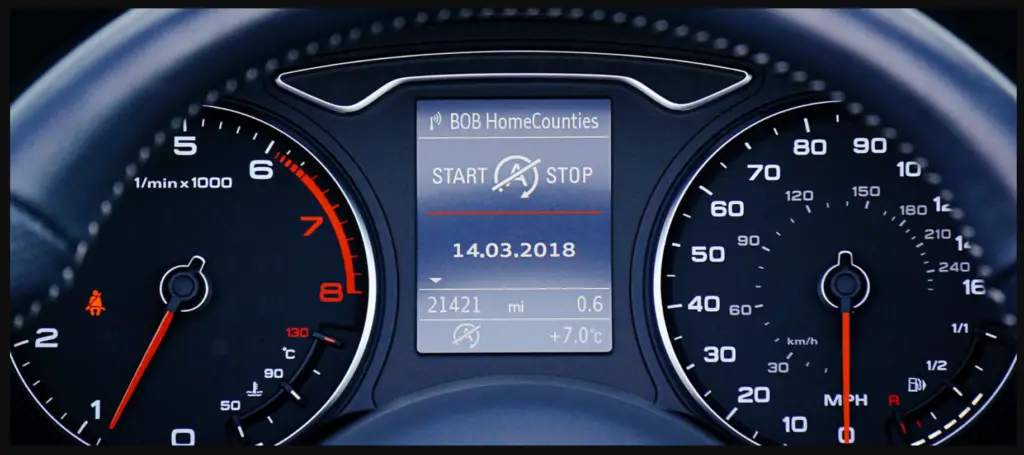
Here are five common reasons why your speedometer might not be working while your RPM gauge is functioning correctly:
1. Faulty Speed Sensor
The speed sensor is a crucial component responsible for measuring the rotation speed of your vehicle’s wheels. If the speed sensor fails or becomes damaged, it can’t accurately provide speed data to the speedometer. Consequently, your speedometer won’t display the correct speed, while the RPM gauge relies on a different sensor to measure engine RPM, so it continues to work.
2. Damaged Speed Sensor Wiring
The speed sensor’s wiring to the speedometer may wear out, become corroded, or get damaged due to exposure to the elements or other factors. Broken or corroded wiring can disrupt the flow of speed data to the speedometer, causing it to malfunction. RPM measurement, on the other hand, relies on separate wiring and sensors.
3. Malfunctioning Instrument Cluster
The instrument cluster houses multiple gauges on your dashboard, including the speedometer. The speedometer may not work correctly if there’s a problem with the instrument cluster itself, such as a damaged circuit or faulty internal components. The RPM gauge might remain unaffected because it uses different circuitry.
4. Blown Fuse
A blown fuse in the vehicle’s electrical system can disrupt power to various components, including the speedometer. If the fuse that powers the speedometer has blown, it won’t function, whereas the RPM gauge could continue working if it’s on a separate circuit and fuse.
5. Failed ECU (Engine Control Unit)
The ECU is responsible for controlling various vehicle functions, including sending signals to the speedometer. If the ECU develops a fault or malfunction, it may not provide accurate speed data to the speedometer. The RPM gauge may remain operational because it often uses a different sensor or signal source to measure engine RPM.
In summary, a malfunctioning speedometer while the RPM gauge works can result from issues related to the speed sensor, its wiring, the instrument cluster, a blown fuse, or problems with the ECU. To determine the specific cause and fix the issue, it’s advisable to consult a qualified mechanic or technician.
Speedometer Not Working And ABS Light On; Causes And Fixing
solidcarcare.com
How to fix the speedometer not working but the RPM working problem?
Fixing the issue of a non-functional speedometer while the RPM gauge is working involves diagnosing the specific cause and addressing it accordingly. Here’s a general guide on how to troubleshoot and fix this problem:
1. Check the Fuse
- Start by checking the fuse box in your vehicle. Locate the fuse responsible for the speedometer (refer to your vehicle’s owner’s manual for guidance).
- If you find a blown fuse, replace it with a new one of the same amperage rating. This may resolve the issue if a blown fuse was the culprit.
2. Inspect the Wiring
- Examine the wiring that connects the speed sensor to the speedometer. Look for any visible damage, corrosion, or loose connections.
- If you identify damaged wiring, repair or replace it as needed. Ensure that all connections are secure.
3. Test the Speed Sensor
- If the wiring appears in good condition, the next step is to test the speed sensor. Use a multimeter to check the sensor’s resistance or output voltage according to your vehicle’s specifications.
- If the sensor is faulty, replace it with a new one. Consult your vehicle’s repair manual for sensor location and replacement instructions.
4. Verify the Instrument Cluster
- If the above steps do not resolve the issue, consider the possibility of a malfunctioning instrument cluster.
- Seek professional help or consult your vehicle’s repair manual for guidance on diagnosing and repairing instrument cluster issues.
5. Check the ECU (Engine Control Unit)
- If all else fails and you suspect an ECU issue, consult a qualified mechanic or technician who can diagnose and repair problems with the ECU. This may require specialized equipment.
6. Seek Professional Assistance
- If you cannot identify or fix the problem on your own, it’s advisable to consult a professional mechanic or an automotive technician.
- Mechanics can access diagnostic tools and expertise to pinpoint the exact issue and perform necessary repairs.
7. Calibration (if needed)
- Sometimes, even after fixing the underlying issue, the speedometer may require calibration to ensure accurate speed readings. A mechanic or technician can perform this adjustment.
Remember that diagnosing and fixing electrical issues in a vehicle can be complex, and safety is paramount. If you are uncomfortable with electrical work or if the problem persists after trying the above steps, it’s best to seek professional assistance to ensure your speedometer is functioning accurately and safely.
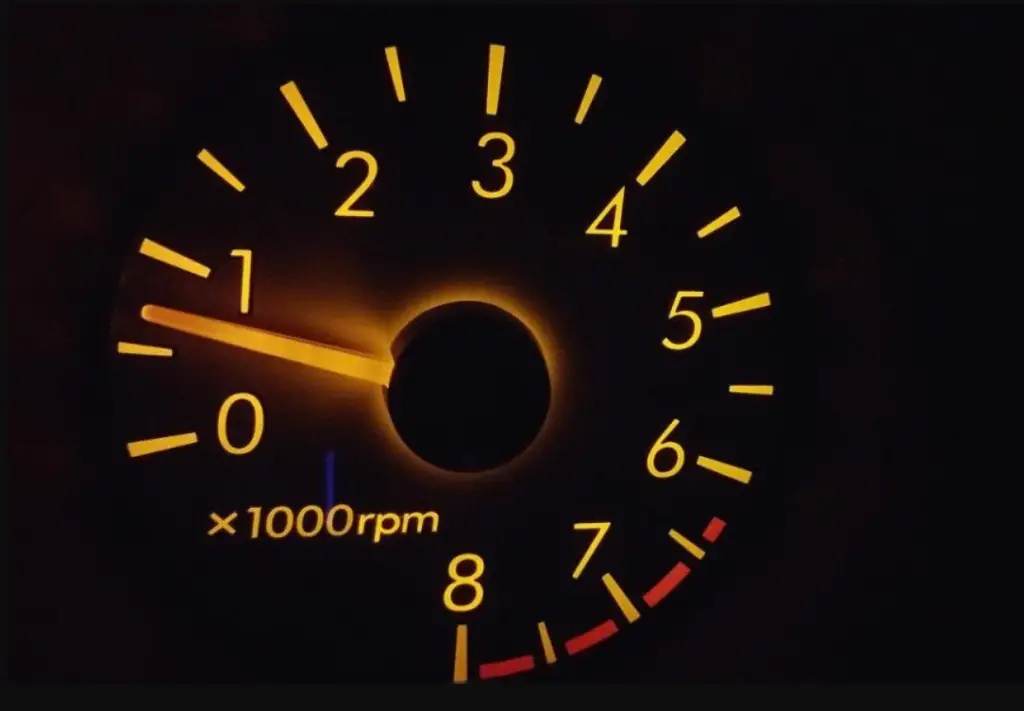
How do you test a speed sensor?
Testing a speed sensor typically involves using a multimeter to check its resistance or voltage output, depending on your vehicle’s type of speed sensor. Here are the general steps to test a speed sensor:
Tools and Materials Needed
- Multimeter
- Vehicle’s repair manual (for specific sensor specifications)
Step-by-step Procedure
- Locate the Speed Sensor:
- Consult your vehicle’s repair manual to identify the location of the speed sensor. It can be located on the transmission, differential, or wheel hub, depending on the vehicle make and model.
- Prepare the Vehicle:
- Ensure the vehicle is safe and stationary with the ignition turned off.
- Access the Sensor:
- Depending on the sensor’s location, you may need to remove certain components or access panels to reach it.
- Disconnect the Sensor:
- Carefully disconnect the electrical connector from the speed sensor. Take note of how it’s connected so you can reconnect it properly later.
- Set the Multimeter:
- Turn on your multimeter and set it to the appropriate mode for measuring resistance (ohms) or voltage, as specified in your vehicle’s repair manual.
- Test for Resistance (Ohms):
- If you’re testing for resistance (ohms), touch the multimeter probes to the sensor’s electrical terminals. There are usually two terminals on the sensor.
- Check your repair manual for the specific resistance values your sensor should have when it’s functioning correctly. A healthy sensor will typically have a resistance value within a specified range.
- If the resistance is significantly outside the specified range or reads “infinite” (indicating an open circuit), the sensor may be faulty and should be replaced.
- Test for Voltage (AC or DC):
- If you’re testing for voltage, reconnect the electrical connector to the sensor.
- Turn the ignition key to the “ON” position without starting the engine.
- Connect the multimeter probes to the electrical terminals on the sensor.
- Check your repair manual for the specific voltage values your sensor should produce. Some sensors generate an AC voltage signal, while others produce a DC voltage signal.
- If the sensor doesn’t produce the expected voltage signal, it may malfunction and need replacement.
- Reconnect the Sensor:
- After testing, disconnect the multimeter and reconnect the electrical connector to the sensor.
- Clear Error Codes (if applicable):
- If you had a check engine light or error code related to the speed sensor, use an OBD-II scanner to clear the codes after you’ve tested and, if necessary, replace the sensor.
- Reassemble and Test Drive:
- Reassemble any components you removed to access the sensor.
- Go for a test drive to check if the speedometer is functioning correctly. If it is, the sensor replacement was likely successful.
Always consult your vehicle’s repair manual for specific testing procedures and sensor specifications, as they can vary significantly between vehicle makes and models. If you’re uncertain about the results or the sensor’s condition, it’s best to consult a professional mechanic for further diagnosis and assistance.
When Do You Need to Use Low Gears in Your Car?
solidcarcare.com
Some related FAQs
What should I do if I find damaged wiring between the speed sensor and the speedometer?
If you identify damaged wiring, repair or replace it as necessary. Ensure that all connections are secure to restore the electrical connection.
Is it safe to drive with a non-functional speedometer but a working RPM gauge?
While it’s technically possible to drive, it’s not recommended. A non-functional speedometer can lead to speeding tickets and compromised safety, as you won’t know your actual speed. Get the issue fixed promptly.
Can a blown fuse be the sole reason for a non-working speedometer?
Yes, a blown fuse can cause the speedometer to stop working. Check and replace the fuse if necessary, but also inspect for other possible issues if replacing the fuse doesn’t resolve the problem.


